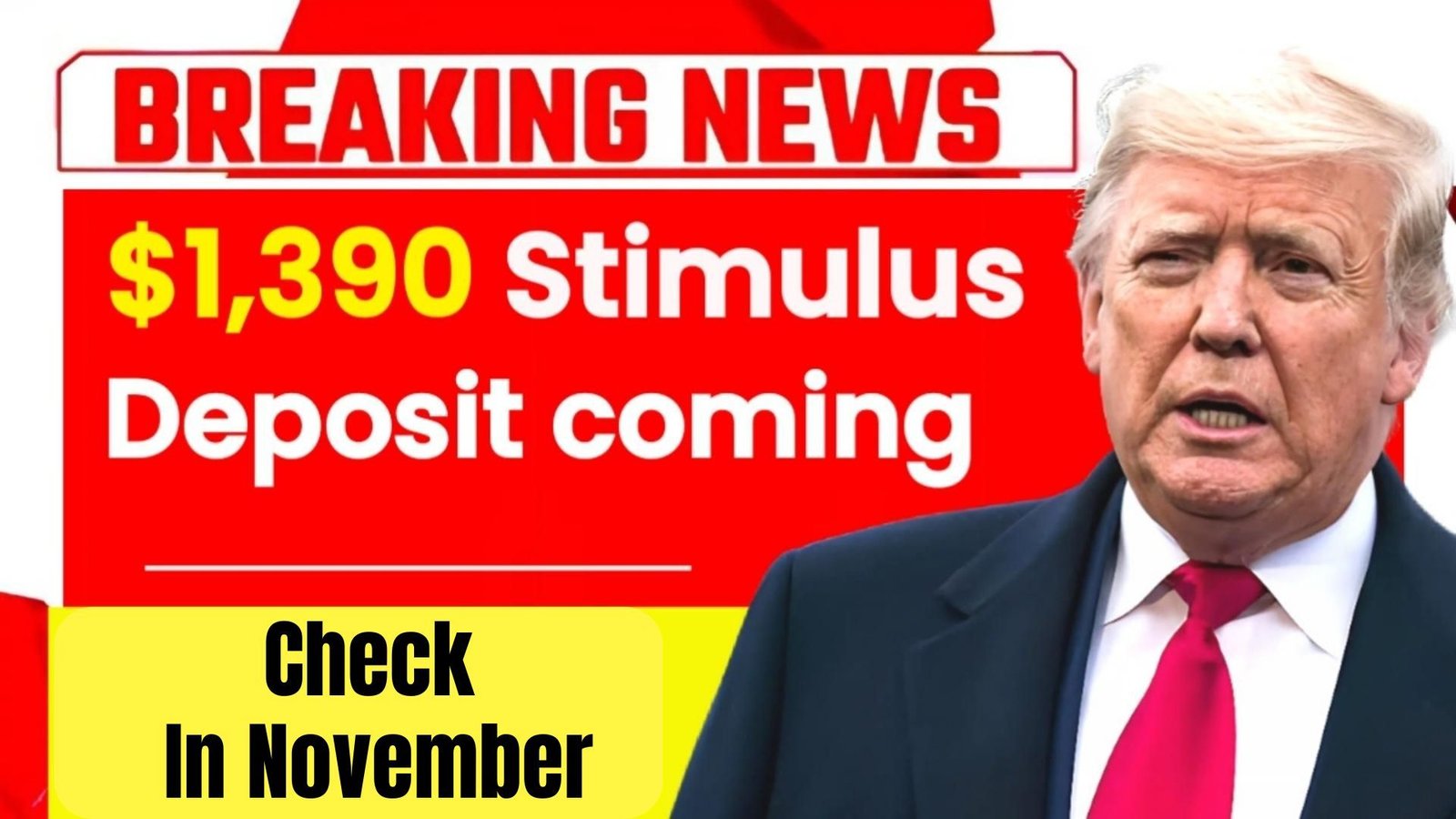Millions of Americans are waking up to a surprise this November — the IRS has approved a $1,390 direct deposit payment, sparking excitement and curiosity nationwide. But who’s eligible, when are payments coming, and what’s really behind this move? Let’s uncover everything you need to know before your deposit hits your account.
What Is the $1,390 Direct Deposit Payment?
The IRS $1,390 payment is part of a federal financial relief initiative aimed at helping individuals and families manage rising living costs in late 2025. While it resembles earlier stimulus or tax refund boosts, this payment targets those who qualify under updated income and filing criteria. Many Americans are now checking their bank accounts eagerly to see if they made the cut.
The Background: How It Started
Since the pandemic, the IRS has managed several waves of direct payments — from Economic Impact Payments to tax credit refunds. The new $1,390 deposit aligns with ongoing efforts to stabilize household finances amid inflation and policy changes. In November 2025, this initiative has gained traction as part of the agency’s broader refund adjustment and supplemental support programs.
Why It Matters Now
As the cost of essentials continues to rise, this IRS-approved $1,390 deposit could offer crucial breathing room. It’s not just another stimulus — it represents a continuation of fiscal relief strategies designed to ease pressure on working families, seniors, and taxpayers who may have missed earlier credits or adjustments.
Who Is Eligible for the $1,390 IRS Payment?
Eligibility depends on several factors:
- Filing status: Single, joint, or head of household.
- Income limits: Adjusted gross income thresholds typically mirror prior IRS aid programs.
- Tax filing compliance: You must have filed your 2023 or 2024 tax return.
- Benefit recipients: Individuals receiving Social Security, SSI, SSDI, or VA benefits may also qualify automatically.
Quick Eligibility
| Category | Qualifies for $1,390? | Payment Method | Notes |
|---|---|---|---|
| Taxpayers with filed 2024 return | ✅ Yes | Direct Deposit | Must meet income cap |
| SSI / SSDI / VA recipients | ✅ Yes | Linked benefit account | Auto-issued |
| Non-filers | ⚠️ Possible | Paper check | Must update info via IRS portal |
| High-income earners | ❌ No | — | Exceeds threshold |
When Will Payments Arrive?
The IRS has released a structured November 2025 payment schedule. Deposits are being rolled out in batches based on taxpayer categories and banking information.
November 2025 Direct Deposit Schedule
| Group | Deposit Date | Payment Type | Notes |
|---|---|---|---|
| Social Security Recipients | November 1–5, 2025 | Direct Deposit | Follows regular SSA schedule |
| SSI / SSDI Beneficiaries | November 7–12, 2025 | Electronic Transfer | Auto-issued |
| Taxpayers (Filed Early) | November 15–20, 2025 | Direct Deposit | IRS priority group |
| Paper Check Recipients | November 25–30, 2025 | Mail Delivery | May vary by state |
How To Check Your Payment Status
You can verify your eligibility and deposit date through the “Get My Payment” tool on the IRS website. By logging in with your taxpayer ID or Social Security Number, you’ll see the payment type, expected date, and current status. Make sure your bank details are correct — any mismatches may delay your deposit.
Expert Tips To Ensure You Receive It
- File or update your 2024 taxes — even if you had no income.
- Enable direct deposit for faster processing.
- Avoid scam emails or texts pretending to be from the IRS.
- Use the official IRS portal only for status updates and eligibility checks.
According to tax professionals, many Americans lose out on such payments simply because they don’t file or keep outdated information on record.
Notable Facts About the IRS $1,390 Deposit
- The program may extend into early 2026, depending on unused federal budget allocations.
- Over 72 million Americans are estimated to benefit.
- It’s non-taxable, similar to stimulus and credit adjustments.
- Payments will appear as “IRS TREAS 310 TAX REF” in your bank statement.
Frequently Asked Questions (FAQs)
Q: Do I have to apply for the $1,390 payment?
A: No application is required if you filed your taxes or receive Social Security benefits.
Q: What if I didn’t file taxes?
A: Use the IRS Non-Filer tool to update your information.
Q: Will this affect my future refunds?
A: No, it’s separate from standard refund processes.
Conclusion: Your November Windfall Awaits
The IRS $1,390 direct deposit is more than a number — it’s timely relief for millions facing financial pressure. With payments scheduled throughout November 2025, it’s worth checking your account or IRS portal soon. A simple verification could mean a surprise deposit that brightens your holiday season.




